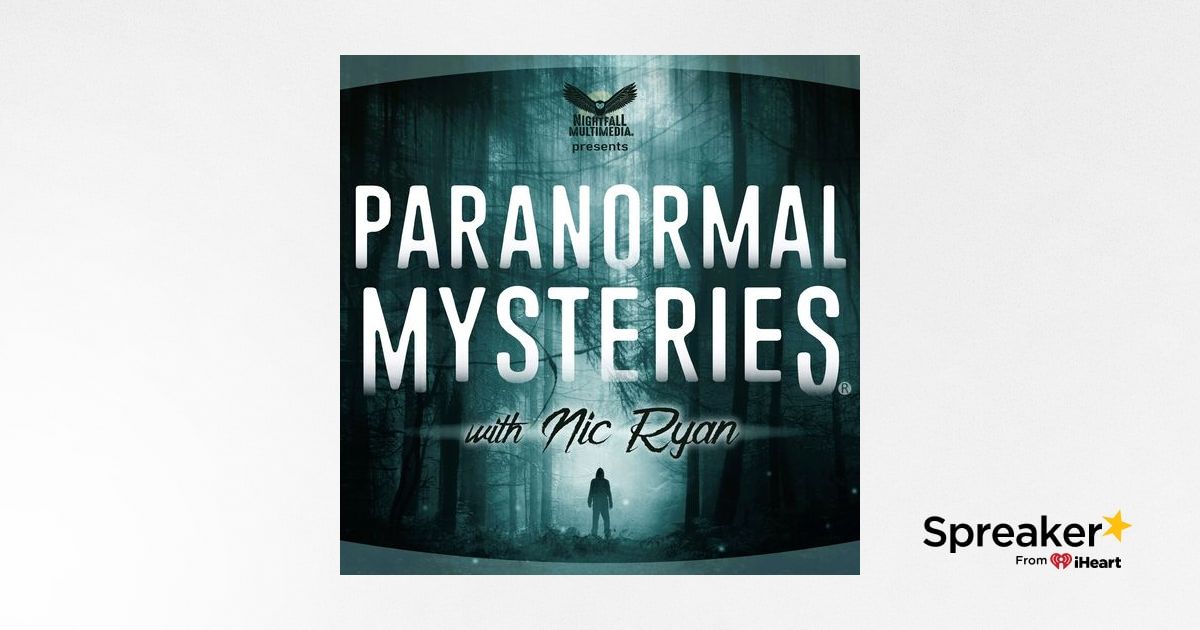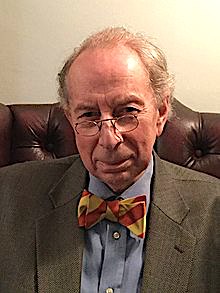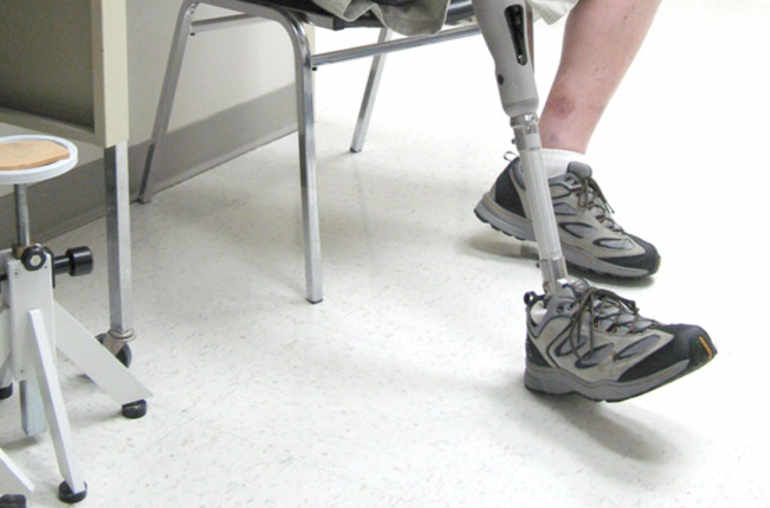PROTECT YOUR DNA WITH QUANTUM TECHNOLOGY
Orgo-Life the new way to the future Advertising by AdpathwayThe Ouija Board has a long and winded history that has created its own lore and rules. What is really the truth behind the board, where spiritualism meets consumerism?
The Ouija board: a simple game to some, a portal to the unknown for others. Whether you see it as harmless fun or a dangerous tool of the occult, one thing is certain—the Ouija board has a long, eerie history that stretches across centuries and cultures. Behind the polished wooden planchette and alphabet-strewn board lies a tale of mysticism, deception, and perhaps even something sinister.
Although most people know what the Ouija board is, few people know its origin, according to Ouija historian, Robert Murch. Sit tight, light a candle, and let’s delve into the shadowy origins of the Ouija board. But be warned—some doors, once opened, are difficult to close.
 Ouija Board: Painting by Norman Rockwell depicting a couple using a Ouija board. This painting was used for the cover of the May 1, 1920 issue of The Saturday Evening Post.
Ouija Board: Painting by Norman Rockwell depicting a couple using a Ouija board. This painting was used for the cover of the May 1, 1920 issue of The Saturday Evening Post.Ancient Spirit Communication: The Predecessors of the Ouija Board
Before Parker Brothers got their hands on it, the concept of talking to spirits through objects wasn’t new, although the notion that Ouija Board was an ancient thing was. Cultures across history have been obsessed with communing with the dead, and they weren’t shy about getting creative.
China’s Mystical Writing: Fu Ji (扶乩)
As early as 1100 AD, the Chinese had a form of “spirit writing” called fu ji, which involved using a suspended wooden or bamboo stylus to guide messages from beyond. Taoist monks and mystics believed the deceased could communicate through this method, leaving cryptic (and sometimes terrifying) messages for the living. Sound familiar? It should—it’s basically an ancient prototype of the Ouija board.
Read More: China’s Mystical Writing: Fu Ji (扶乩) – When Spirits Pick Up the Pen
The Spiritualist Movement: A Victorian Obsession
Fast forward to the 19th century, when the world was gripped by a new obsession: Spiritualism. This was the golden age of séances, mediums, and all things ghostly. It largely started when the Fox sisters from New York claimed to be able to communicate with the dead. People were desperate to reach lost loved ones, and mediums capitalized on that desire. Knocks on walls, flickering candles, and even floating tables were all part of the supernatural spectacle.
Read More: The Spiritualist Movement: The Fox Sisters Who Started a Ghostly Revolution as a Prank
But let’s be real—not all mediums were exactly credible. Many were caught faking spirit communication, using tricks that would make even Houdini roll his eyes. But fraud or not, the demand was high, and the market was ripe for a faster, easier way to contact the dead.
 Spiritualism and Table Turning: Medium William Marriott levitating table. Although communicating with the devil moved away from this, the part of sitting around a table lingers.
Spiritualism and Table Turning: Medium William Marriott levitating table. Although communicating with the devil moved away from this, the part of sitting around a table lingers. Birth of the Ouija Board: A Capitalist Séance
Enter businessman Elijah Bond, who saw dollar signs where others saw ghosts. In 1890, he, along with Charles Kennard and William Fuld, created the first commercial “talking board” for The Kennard Novelty Company: Their goal? To cash in on the Spiritualist craze with a device that lets anyone communicate with spirits.

One problem with Spiritualism and the communication with the dead, was that it was too slow to deliver the messages. There were more people wanting to talk with the dead than there were mediums to deliver the messages, besides, it could be expensive to attend a seance.
The solution was to make a more effective way of communicating. Often the mediums would spell out the entire alphabet and wait for the spirit to knock when they reached the right letter. Too boring, so the board came with the entire alphabet.
The idea of a talking board like this was already a popular thing in the spiritualist communities in Ohio and the press reported on these boards as far back as 1886. Together with the desperation and grief of the loss in the aftermath after the Civil War, the market was there for the taking.
The more efficient ways of communicating with the dead piqued the interest of the men that would form The Kennard Novelty Company and would exclusively make the Ouija board. In the beginning it was the local coffin maker, E.C. Reiche from Prussia who made the boards. The business venture was a success. It was a tool to communicate with the dead in the easiest way possible.
The name “Ouija” is a whole mystery in itself. Many people think that it’s the combination of the French oui and the German ja. According to legend, the board named itself when Bond’s sister-in-law asked it for its name during an early session one night in 1890. Helen Peters was a strong medium according to Bond and claimed the word meant “good luck”.
It is also possible that it was because she was wearing a locket with a picture of a woman where the word was written next to it. Some have speculated that it was actually a picture of the famous writer, Ouida, that Peters really liked and just misread her name.
She has since been known as Mother of the Ouija Board.
The Patent Office and the “Supernatural” Test
 Mother of the Ouija Board: Helen Peters
Mother of the Ouija Board: Helen PetersNow here’s where things get extra weird. When Bond and his crew applied for a patent, the U.S. Patent Office was skeptical. The officials allegedly demanded proof that the board actually worked before granting a patent. So, Peters asked the board to spell out the name of the chief patent officer—who, mind you, they had never met.
It did.
They got their patent.
Coincidence? Trickery? Did Bond, who was a patent attorney, know of this officer’s name beforehand? Or something else?
The Ouija Board Divides the Peters Family
So what happened to Peters and Helen Peters who was a vital person when creating the board? According to the stories, she wanted nothing to do with the board after it created a rift within the family.
Family heirlooms from the civil war went missing from her home and she asked the board who had taken them. According to Peter’s grandson, it was a family member, something the Ouija board had told them. Half the family believed it, creating a rift in the family that was never resolved and tore them apart.
After this, she sold her stock in the company and told everyone until her dying day to never play the board, because it would lie.
William Fuld: The Man Who “Died for the Board”
William Fuld, who took over production of the Ouija board in the early 1900s, was one of its biggest promoters. He cut ties with his brother in 1919 and never spoke again. The feud was so big, Isaac Fuld exhumed his baby daughter and reburied her in another cemetery.
In 1927, Fuld fell to his death from the roof of a factory when he was overseeing an installation of a flag—one that he claimed the Ouija board told him to build to prepare for big business. He was expected to live through this injury, but the bumpy road to the hospital sent one of his fractured bones through his heart. On his deathbed, he begged his children to never sell the board out from the family.

For decades, the Ouija board was just another quirky parlor game, sold alongside Monopoly and Clue. After Full died, people started to argue about who really was the inventor behind the board, and several rival boards appeared and failed to reach the cult status the Ouija have. Four decades after Full’s death, they sold the board out of the family.
A fun pastime for the whole family as well as a spiritual oracle. The more uncertain the times were, the more the board sold. During the first world war there was a surge in interest in the board as well as during Prohibition times. In the second world war, a single New York department sold over 50 000 boards over five months in 1944. During the Vietnam war, the Parker Brothers bought the game and two million boards were sold, more than Monopoly.
It wasn’t until the mid-20th century that things took a sinister turn.
Hollywood’s Love Affair with the Ouija Board
If there’s one thing Hollywood does well, it’s making innocent things terrifying (looking at you, Annabelle). The 1973 horror classic The Exorcist sent the Ouija board straight into the realm of nightmares. In the movie, a little girl uses a board to talk with a spirit she thinks is Captain Howdy, unwittingly inviting a demon into her life. Suddenly, the board wasn’t just a game—it was a gateway to hell.
 The Exorcist: After the use of the Ouija Board in the horror movie, many believed that the thing was the thing of the devil.
The Exorcist: After the use of the Ouija Board in the horror movie, many believed that the thing was the thing of the devil.After that, reports of “Ouija-related hauntings” skyrocketed, appearing in over 20 films and appearing on countless shows. But this also affected how Ouija was seen in the real world. Stories of possessions, cursed homes, and terrifying encounters flooded the media.
Religious groups condemned the board, and even today Catholics claim that the board is “far from harmless”, and that it is an occult practice and that “nothing positive can ever come from the use of Ouija board.”. Exorcists got busy, and Parker Brothers probably started questioning some life choices.
Real-Life Horror Stories (Or So They Say…)
Whether you believe in ghosts or not, the Ouija board has a long list of spooky anecdotes attached to it:
The “Zozo” Demon: Many people claim to have encountered a malevolent entity named Zozo through the Ouija board. He’s known for deception, threats, and generally ruining your night. Skeptics say it’s a case of the ideomotor effect (your muscles move the planchette unconsciously). Believers say, well…good luck sleeping.
Read More: The Demon Zozo: The Mysterious and Terrifying Entity of the Ouija Board
In 1930, a woman in Buffalo participated in a murder, supposedly on the encouragement of Ouija board messages.
Read More: The Ouija Board Murder in Buffalo
So, is it just a game? Or is something playing you?
The board has been through much criticism from religious groups, even burning. in Alamogordo, New Mexico in 2001, it was burned on bonfires along with copies of Harry Potter and Disney’s Snow White and Eminem CD’s.
![A woman tosses a Ouija Board into a bonfire outside a church in New Mexico in 2001, after the church's pastor urged parishioners to burn dozens of Harry Potter books and other types of literature and games they found offensive. [Neil Jacobs / Getty Images]](https://npr.brightspotcdn.com/dims4/default/148dc65/2147483647/strip/true/crop/2824x2118+0+0/resize/880x660!/quality/90/?url=http%3A%2F%2Fnpr-brightspot.s3.amazonaws.com%2Flegacy%2Fimages%2Fnews%2Fnpr%2F2022%2F02%2F1077288804_1754391723.jpg) Fearing the Ouija Board: A woman tosses a Ouija Board into a bonfire outside a church in New Mexico in 2001, after the church’s pastor urged parishioners to burn dozens of Harry Potter books and other types of literature and games they found offensive. // Source
Fearing the Ouija Board: A woman tosses a Ouija Board into a bonfire outside a church in New Mexico in 2001, after the church’s pastor urged parishioners to burn dozens of Harry Potter books and other types of literature and games they found offensive. // SourceThe Science of the Ouija Board: A Trick of the Mind?
Of course, there’s a rational explanation for all of this. The Ouija board is often linked to the ideomotor effect, where tiny, unconscious muscle movements create the illusion that an external force is moving the planchette.
In simpler terms: your brain is tricking you. You think you’re not moving the planchette, but your subconscious is. Science has replicated this effect in multiple studies, proving that the board’s messages aren’t coming from ghosts—they’re coming from you and small muscular movement creating a large effect.
Boring? Maybe. But definitely less terrifying than summoning a demon.
What research of the board has shown though, is that with the help of Ouija board, participants have been able to answer more factual questions correctly than without it. 50% accuracy for vocal responses compared to 65% for Ouija Board responses. Read the entire research report.
The subconscious working better than anything else, or something else coming to visit?
Final Thoughts: Should You Use a Ouija Board?
Look, I’m not here to tell you what to do. But let’s be real—whether you believe in spirits or not, the Ouija board has a reputation. If it’s just a board game, why do so many people have terrifying experiences with it? Why does it consistently pop up in stories of hauntings and possessions?
Maybe it’s just superstition. Maybe it’s the power of suggestion.
Or maybe…just maybe…some doors are better left closed.
People have tried to come up with rules for safe playing, like claiming you shouldn’t ask the board about God, where treasures are buried and when you are going to die. It is said that if you try to burn the board, it will scream at you, so the safe way to get rid of it is to break it into seven pieces, sprinkle it with holy water, then bury it.
Hasbro, whose website warns: “Handle the Ouija board with respect and it won’t disappoint you!”
But hey, if you do decide to use one, don’t say I didn’t warn you. And for the love of all things spooky—never, ever forget to say goodbye.
More like this
Newest Posts
References:
The Dark History Behind Ouija Boards
Ouija board | Spiritualism, Divination, Supernatural | Britannica
https://www.sfomuseum.org/exhibitions/mysterious-talking-board-ouija-and-beyond
BBC NEWS | Entertainment | ‘Satanic’ Harry Potter books burnt
BBC NEWS | Entertainment | ‘Satanic’ Harry Potter books burnt
The Museum of Talking Boards: Ouijastitions
Earlier boards:


 2 days ago
2
2 days ago
2


















.jpg)






 English (US) ·
English (US) ·  French (CA) ·
French (CA) ·